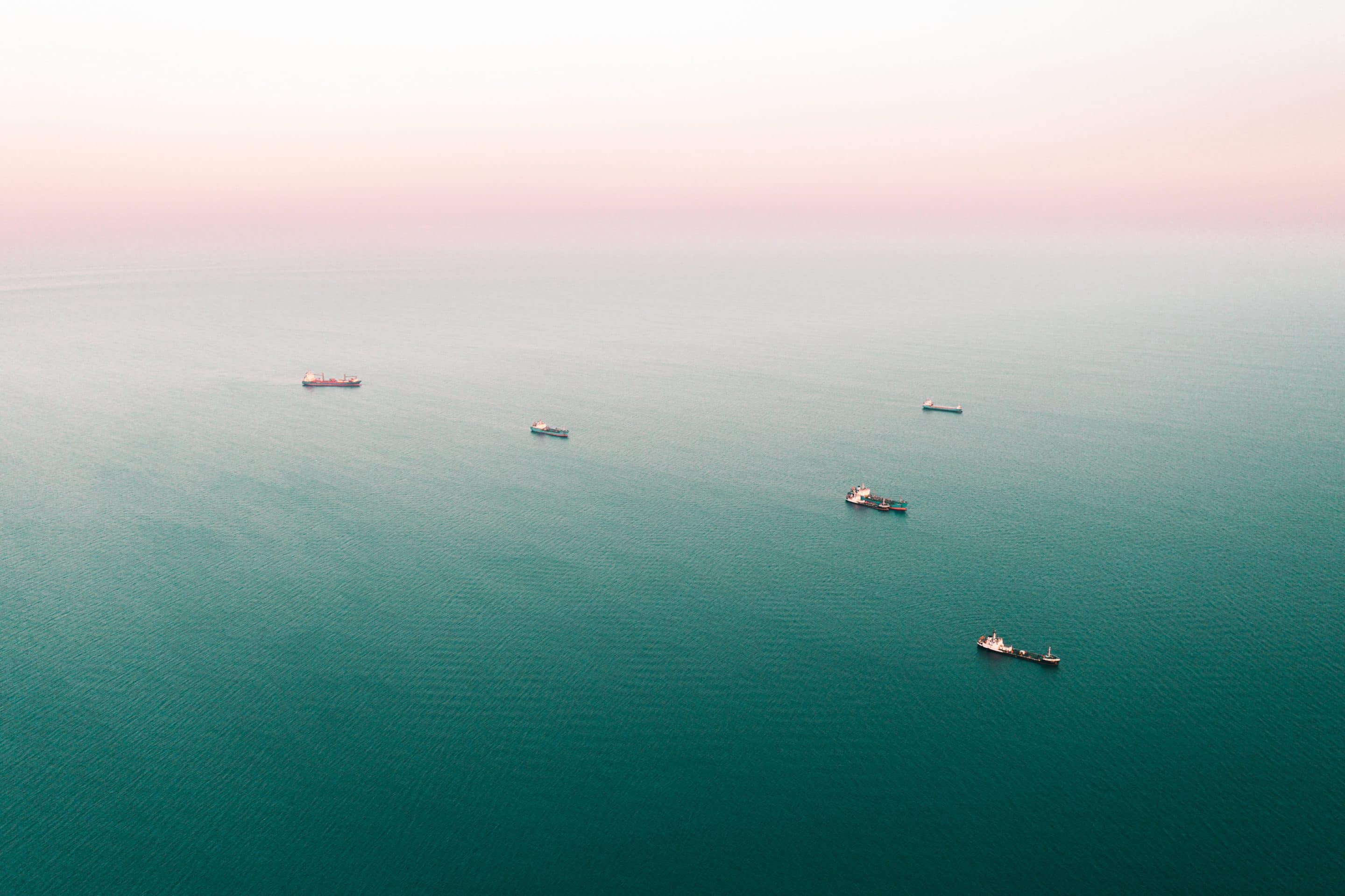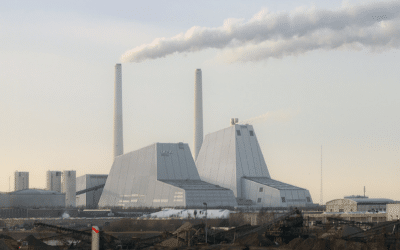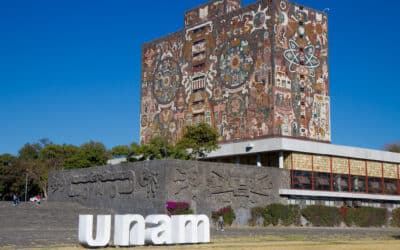By Anja Chalmin
The last quarter of 2021 saw the announcement of a number of new geoengineering experiments, as well as commercial and research projects that impact the marine environment, including geoengineering approaches that aim to manage solar radiation, brighten marine clouds, artificial upwelling and ocean fertilisation. The most important developments are detailed below.
New ocean fertilization trials off the Australian coast
The WhaleXproject aims to test ocean fertilization in the open ocean on a larger-scale. A first trial was conducted on 19 December 2021, dumping 300 litres of nutrient solution into the ocean off Sydney, about eight kilometres off Port Botany in New South Wales. In January, WhaleX intends to repeat the trial with 2,000 litres of nutrient solution in the same marine area. Later, WhaleX plans to expand the trial to an area of 225 square kilometres, also in the same ocean area. From what is known so far, the nutrient solution consists of a mixture of nitrogen, phosphorus and trace elements. The red colouring of the solution is probably due to a high iron content. The trials are led by Edwina Tanner, University of Sydney. The Ocean Nourishment Corporation (ONC) is another participant in the project. ONC has avoided the term ocean fertilization for many years, using instead, for example, “ocean nourishment” or “ocean restoration”. This time, ocean fertilization is marketed as “simulated whale poo”.
Over the last 30 years, there have been more than fifteen ocean fertilization trials in the open ocean. These have failed to demonstrate that this proposed carbon removal technology is an effective carbon sink. Some scientists even warn that ocean fertilisation could lead to oxygen-depleted “dead zones” and have negative impacts on the marine food web.
Both research and commercial projects intend to test artificial upwelling in the open ocean
The German GEOMAR Helmholtz Centre for Ocean Research has been active in various research projects around the topic of artificial upwelling for several years. Two GEOMAR-led research programmes that tested artificial upwelling in the open ocean ended in December 2021:
- First, the three-year pan-European research programme “Ocean artUp – Ocean Artificial Upwelling“, which aimed to study the feasibility, effectiveness and risks of artificial upwelling as well as its potential to increase ocean productivity, raise fish production and enhance oceanic CO2 sequestration. The € 2.5 million EU-funded project carried out artificial upwelling experiments in the harbour of Taliarte, Gran Canaria, including a nutrient enrichment experiment and trials to test different upwelling intensities. The trials took place in so-called mesocosms, which can be described as large test tubes, used to simulate an upwelling situation.
- The CUSCO project, which also lasted three years, used mesocosms to investigate the effects of varying upwelling intensities on plankton communities and biomass production in the Humboldt Current off Peru. The project was funded by the German Federal Ministry of Education and Research (BMBF).
GEOMAR also coordinates the pan-European research project OceanNETs (Ocean-based Negative Emission Technologies), which is underway since 2020. OceanNETs aims to investigate the feasibility and impact of ocean-based approaches to remove CO2 from the atmosphere. The project addresses artificial upwelling, but also other marine geoengineering approaches, e.g., ocean fertilization and marine enhanced weathering.
In addition, GEOMAR is further expanding its investigations into artificial upwelling in a new research project called “Test-ArtUp“. This research project, also funded by the German BMBF, is coordinated by GEOMAR and conducted in cooperation with the University of Hamburg, the Kiel Institute for the World Economy, Kiel University and Kiel University of Applied Sciences. The objective of Test-ArtUp is to investigate the use of artificial upwelling for the purpose of CO2 removal. The project aims to analyse the following aspects of artificial upwelling: the technical application and optimisation, the capacity for additional CO2 uptake and long-term storage as well as the associated environmental risks and ecological side effects, the economic benefits and trade-offs, and the legal constraints and management requirements. It is not yet publicly known how the different phases of the work will be implemented and whether further artificial upwelling tests in the open sea are planned as part of the project.
The Test-ArtUp project description states: “Recent studies on artificial upwelling, however, revealed a much higher potential for CO2 removal than previously expected.” The GEOMAR-led project OceanNETs also makes claims about the efficiency of artificial upwelling: “When the phytoplankton die and their biomass sinks into the deep ocean, the fixed carbon can be stored at depth for 100 years and more.” In both cases, it remains unclear exactly which studies these statements refer to and which research is supposed to substantiate them. If GEOMAR is referring to the two predecessor projects CUSCO and Ocean artUp, the question must be asked whether experiments in mesocosms are suitable for making statements about the effects of artificial upwelling in the open ocean. The experiments were conducted in the open ocean, but in mesocosms, where the diverse interactions in the ocean, e.g., with regard to the complex marine food web, cannot be reproduced. So far, no evidence has been provided that artificial upwelling is effective as a carbon sequestration measure. On the other hand, several studies fear severe environmental and socio-political risks, such as ocean deoxygenation, increased release of methane, substantial changes in species composition and potential transboundary effects on fisheries, coastal communities and weather patterns.
At GEOMAR, Ulf Riebesell is responsible for the Ocean artUp and Test-ArtUp projects. He is also involved in other artificial upwelling projects, for example as a consultant to the US-based company Ocean-Based Climate Solutions, Inc. The company announced that it would introduce its artificial upwelling technology on a commercial-scale for 2020/21 but these plans have not yet been implemented. In December 2021, Ocean-Based Climate Solutions announced a demonstration-scale artificial upwelling project in the Canary Islands, to be conducted in July 2022. While the company’s previous artificial upwelling tests involved upwelling from a water depth of 100 meters, the depth in the planned Canary Islands test is said to be 400 meters.
The company expects its artificial upwelling technology to play a key role in removing billions of tonnes of CO2, and reported that companies such as Microsoft and Stripe have expressed interest in the technology. Ocean-Based Climate Solutions envisions the large-scale deployment of its artificial upwelling technology, with the goal of implementing the technology over 62.5 million square kilometres of ocean surface. Two upwelling pumps are to be installed per square kilometre, which corresponds to about 125 million pumps. When fully deployed, the pumps cost US$20,000 each. This approach requires the introduction of large structures into the ocean. How these structures will affect marine life and how they will be maintained remains unclear. Their compatibility with shipping and fisheries is also doubtful.
The Climate Foundation (TCF), headquartered in the USA, is also planning large-scale artificial upwelling and intends to “irrigate” areas of up to 100 hectares with artificial upwelling technology. To implement these plans, the company is designing 100-square-metre platforms that combine seaweed cultivation and artificial upwelling. These platforms are currently being built in the Philippines and will be exported from there to Australia, among other countries. For Australia, TCF announced that they have received funding for a project in which seaweed will first be grown and then dumped into the sea. The aim of this project is to sequester carbon in the deep sea. TCF had already conducted an upwelling experiment on the Australian coast in 2009, in Tutuila Airport reef, near Tutuila Airport.
An artificial upwelling technology based on bubble curtains has been developed by OceanTherm AS and SINTEF. This technology is intended to reduce the strength of hurricanes or to cool coral reefs. In 2019, the project partners conducted a trial on the Norwegian coast at a depth of fifty meters. As a next step, the technology is to be tested on a larger scale and at a depth of 150-200 meters. Exact information on the planned trial is not yet available. Currently, OceanTherm AS is trying to raise up to four million US$ to demonstrate the technology.
Outdoor trials on artificial upwelling are also being pursued at other locations, including the Blue Fields Demonstration Project in the USA and Zheijiang University in China.
New Enhanced Weathering trials and approaches
The pan-European research project OceanNETs, coordinated by GEOMAR, conducted an offshore experiment at Taliarte harbour, in Gran Canaria. The trials started in September 2021 and lasted over seven weeks. Alkaline minerals were dissolved in nine mesocosms to test enhanced weathering in the sea. The investigations focused on how the biotic communities enclosed in the mesocosms react to this intervention. OceanNETs is funded under the Horizon 2020 Programme of the European Commission. If employed on a larger-scale, enhanced weathering is highly expensive and energy-intensive, e.g., due to massive mining operations. Huge amounts of suitable rocks would need to be mined and crushed because it takes approximately two tons of rock material to absorb one ton of CO2.
The US-based project SEA MATE (Safe Elevation of Alkalinity for the Mitigation of Acidification Through Electrochemistry) plans to prototype an acid removal technique to combat ocean acidification and enable the long-term storage of carbon in the sea. The project aims to remove acid from the ocean and convert carbon dioxide into bicarbonate through electrochemistry. The bicarbonate will then be sunk into the deep sea. During the proposed process, electric currents are sent through seawater, creating an acid and a base. The base will be returned to the ocean and is expected to increase the ocean’s capacity to store atmospheric CO2. SEA MATE anticipates that the acid can be sold as an industrial product, e.g., for use in the mining industry. SEA MATE is currently conducting trials to assess the overall potential of the concept, its economic viability and environmental risks and benefits. The project is expected to start as a commercial project within twelve to eighteen months. SEA MATE is conducted by a team of researchers led by Matthew Eisaman at Stony Brook University, in cooperation with the University of Washington and the National Oceanic and Atmospheric Administration (NOAA).
The Canadian company Planetary Hydrogen has developed a technology described as ocean alkalinity enhancement, called SeaOH2 and designed to mimic natural weathering. The technology produces hydrogen and oxygen from water through electrolysis. By adding a mineral salt, the electrolysis cell also produces a compound called mineral hydroxide. This compound is said to actively combine to form carbon dioxide and act as a base in the sea. The process is designed to capture CO2 from the air and produce hydrogen. Planetary Hydrogen aims to have a pilot plant up and running in the Halifax region by 2022. In December 2021, the project has been selected for phase one of the UK Department of Business, Energy & Industrial Strategy’s Direct air capture and greenhouse gas removal programme.
Solar Radiation Management in the Great Barrier Reef area
Since 2019, the Great Barrier Reef Foundation’s Annual Work Plan has included a budget to study solar radiation management (SRM). In 2019/20, AU$ 1.6 M were allocated; two years later, the budget allocated for SRM research and field trials has more than quintupled. The studies on SRM are part of the government’s Reef Restoration and Adaptation Program (RRAP) and look at different approaches to shading coral reefs. The program aims to “target reefs likely to suffer heat stress ahead of predicted bleaching events“. The RRAP aims to help the Great Barrier Reef (GBR) resist, adapt to, and recover from the impacts of climate change. It is delivered by a collaboration between the Australian Institute of Marine Science (AIMS), the Great Barrier Reef Foundation, CSIRO, The University of Queensland, Queensland University of Technology, Southern Cross University and James Cook University. A RRAP Investment Case and Concept Feasibility Study was conducted from 2018 to 2019, examining 160 proposed interventions. Forty-three potential interventions were selected for further study, and the RRAP began a R&D program to further develop, test and risk-assess these interventions, including the following options for “cooling and shading”: larger-scale solar radiation management (SRM), such as marine cloud brightening (MCB), mist, fog or surface films. In 2021, the RRAP published a list of priority interventions, including MCB and fogging. The RRAP recommends temporary shading by fogging to alleviate acute heat and light stress. The recommended deployment size is twenty reefs or more. The suggested deployment scale for cooling by cloud brightening is 200 or more reefs, up to the whole Great Barrier Reef. According to the RRAP “Fogging and cloud brightening may work well together to reduce solar radiation on reefs across a wide range of atmospheric conditions.” Since 2020, MCB has been tested over the Great Barrier Reef by Southern Cross University and research partners. In 2020, MCB trials were conducted next to Broadhurst Reef. In March 2021, further MCB trials were conducted in the Great Barrier Reef, but details of the scale and location have not yet been released. Announced were trials over an area of 120 square kilometres. Trials are currently being prepared for 2022 – details on the extent, duration and location are once again not yet disclosed.




